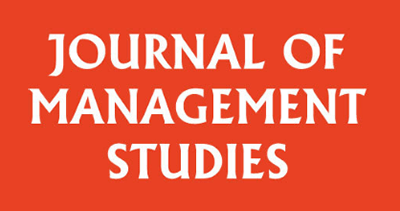
Extending the Turn to Work
Summary
What if the most powerful forces in organizations aren’t strategies or systems, but the invisible work people do to build meaning, shape identities, and define what matters? In this special issue of the Journal of Management Studies, we reframe how we think about organizational life—focusing on social-symbolic work, the purposeful construction of the social realities that define organizations, institutions, and ourselves. In our Editorial, we outline a framework that provides a useful meta-theory—the social-symbolic work perspective—that revolves around two key concepts: “social-symbolic objects” defined as meaningful patterns in a social system; and “social-symbolic work” defined as conscious, reflexive efforts to shape social-symbolic objects. We then introduce the articles that appear in the special issue and identify important cross-cutting themes. Drawing on these articles, we go on to identify potentially fruitful areas for future research on social-symbolic work and end with a challenge to organizational scholars to build on this special issue to move our understanding of social-symbolic work forward.

What Is Social-Symbolic Work?
At its core, social-symbolic work is about how people purposefully create, maintain, and disrupt the taken for granted social reality that forms the backdrop of organizational life. It focuses on social-symbolic objects—like identities, careers, institutions, and values—that aren’t tangible but are deeply real in their effects. In our special issue, for example, articles examine social-symbolic work that targets a wide range of objects including the identities of park rangers, the boundaries of co-working spaces, and the careers of journalists. To shape these objects, actors engaged in different forms of identity work, boundary work, and career work.

The Turn to Work: A New Lens for Organizations
For years, researchers have explored forms of “work” like identity work, emotion work, institutional work, and boundary work. This special issue brings them together under one umbrella. Instead of treating these as isolated areas of study, the authors argue for a broader, unified perspective—one that emphasizes how people construct the fabric of organizations through language, relationships, and material practices.
Bringing these different forms of work together provides a foundation for scholars to identify new kinds of objects and work, as in Albareda and Branzei’s article in the special issue that introduces biocentric work and biophysical objects. It also highlights the intersection of previously separate forms of work, as in Kim, Lim, and Monzani’s article integrating boundary work and social identity work.

Why This Matters Now
As organizations face unprecedented challenges—technological disruption, social upheaval, environmental collapse—the way we understand work, leadership, and purpose are shifting fast. The social-symbolic work perspective offers tools to understand and influence these shifts including new ways to think about:
- Technology as a co-creator: From prompt engineers to generative AI, digital tools aren’t just passive platforms—they’re active agents in shaping meaning with important impacts on how organizations are constructed.
- Violence, ethics, and power: Social-symbolic work isn’t always benign. It can reinforce hierarchies, mask exploitation, or provoke resistance. It also highlights how violence can be an important form of social-symbolic work.
- Leadership development as meaning-making: More than skill-building, leadership programs are arenas for constructing identities, reinforcing values, and navigating power.
Final Thought
The social-symbolic work framework reframes and expands what it means to “do” the work of organizations and organizing. It invites both scholars and practitioners to look beyond organization charts and structures; to focus instead on the everyday, intentional acts through which people create and shape the social world of organizations. Exploring social-symbolic work in organizational life thus provides new understandings of long-standing concerns and points to new ideas and problems.

0 Comments